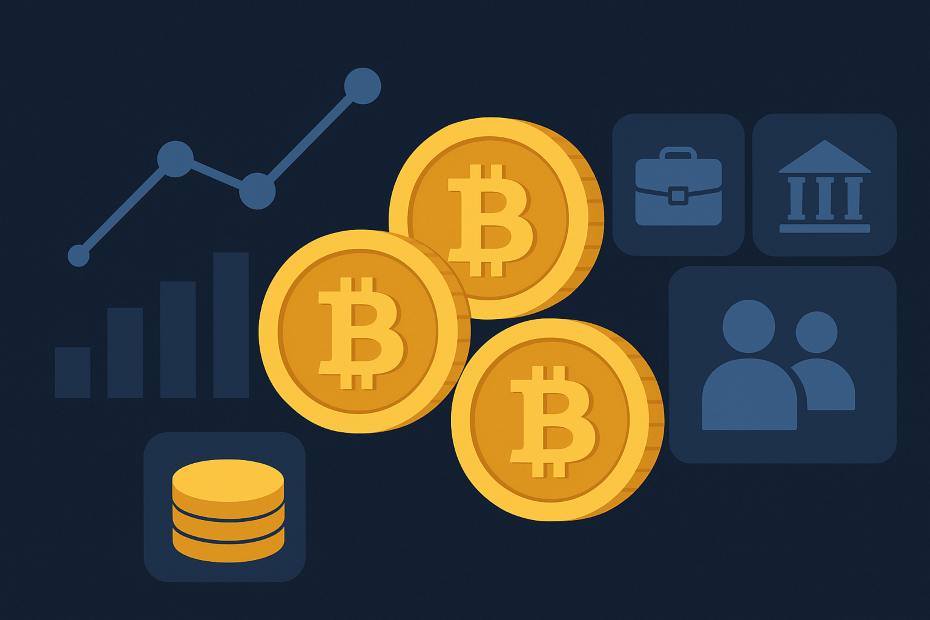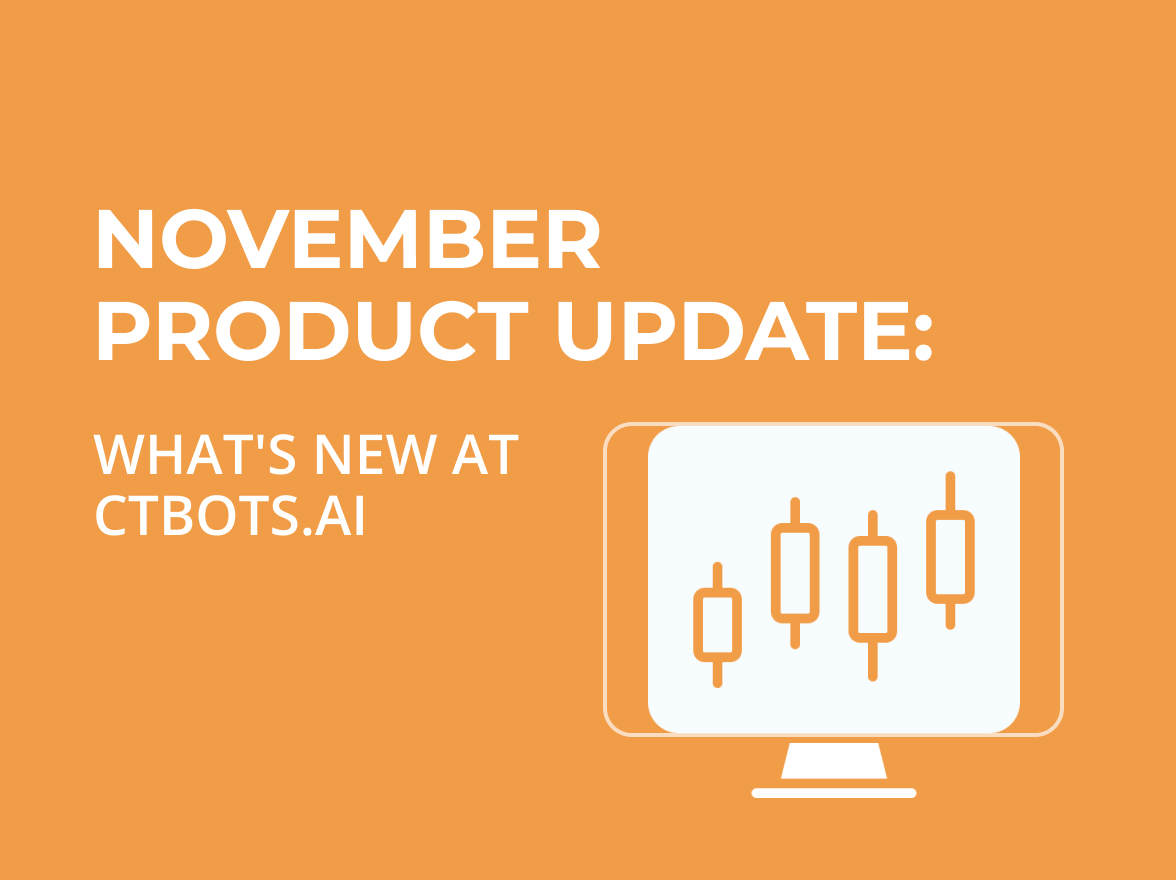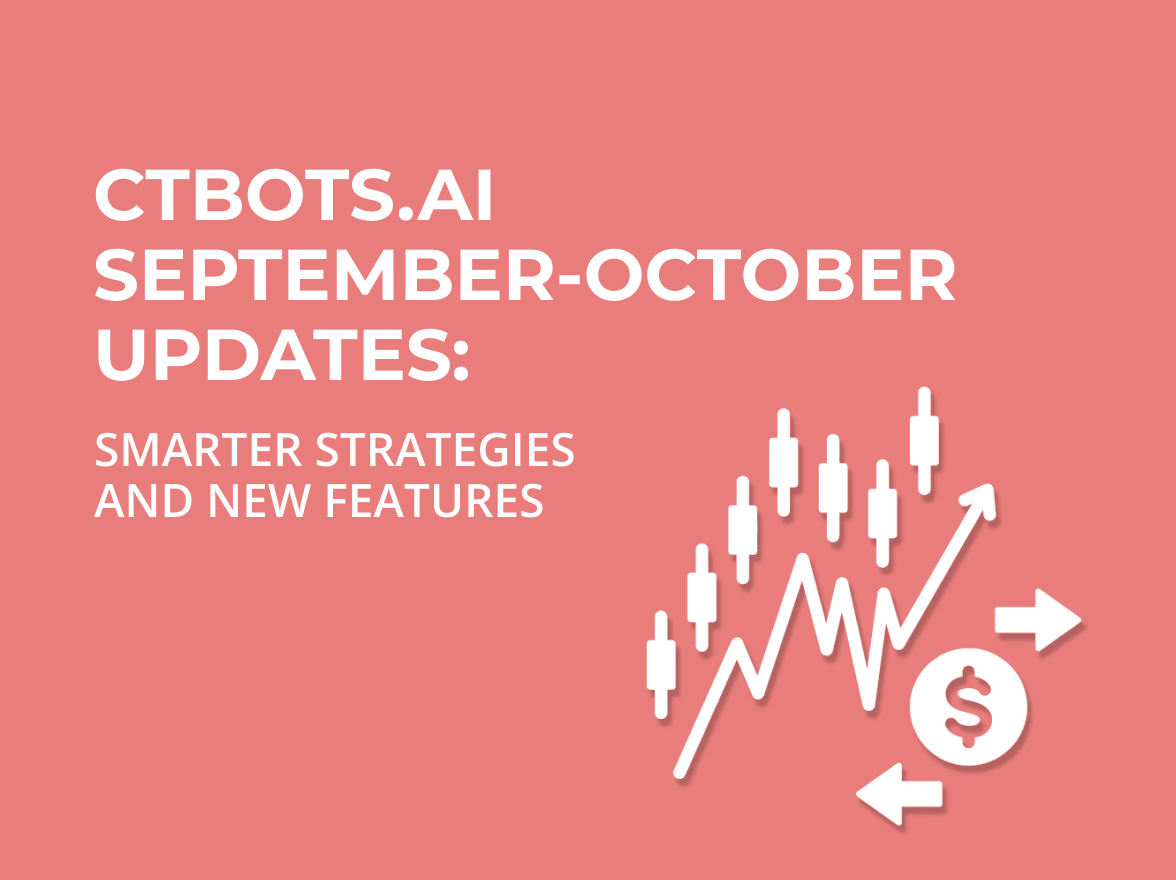November product update: What’s new at ctbots.ai
November was an incredibly productive month for ctbots.ai. We made significant improvements to our strategy logic, portal functionality, and overall bot performance.
Spot trading is the backbone of crypto markets. It gives investors direct ownership of assets and immediate settlement, unlike derivatives or futures. While retail traders are still active, today’s market is largely influenced by institutions.
In this article, we look at three main groups shaping the crypto spot market: hedge funds, ETFs/ETPs, and family offices. We’ll explain what they are, their scale, how they trade spot, and their overall market impact. We’ll also compare them, highlight opportunities for smarter execution (such as ctbots.ai), and discuss where the market is headed.

What they are
Crypto hedge funds are professional investment funds that use strategies like arbitrage, long/short, quant, and market-neutral trading. They combine spot and derivatives to balance risk and profit opportunities.
Scale and examples
Spot trading role
Impact
Hedge funds help provide liquidity, narrow spreads, and stabilize prices across different exchanges. They play a major role in making crypto markets more efficient.
What they are
Exchange-traded funds and products (ETFs/ETPs) let investors gain exposure to crypto through traditional stock markets. The key point is that real crypto must be bought or sold in the spot market whenever ETF shares are created or redeemed.
Scale and examples
Spot trading role
ETF flows are one of the biggest drivers of spot demand. When investors buy ETF shares, authorized participants must buy real BTC or ETH, directly affecting the spot market.
Impact
ETFs are the clearest example of institutional capital entering crypto. They absorb large amounts of coins, reduce available supply, and provide easy access for mainstream investors.
What they are
Family offices manage the wealth of ultra-rich families. They often invest in alternatives like private equity, real estate, and now, crypto—either directly or through funds and ETFs.
Scale and examples
Spot trading role
Family offices often rely on OTC desks or ETFs to execute large block trades discreetly, helping to limit market impact. Their allocations are typically long-term, and about 1.8% engage in direct crypto trading.
Impact
They provide “sticky” capital—stable inflows that remain in the market over the long term, helping to reduce volatility and support consistent demand. In crypto trading, there is potential in stablecoin transactions, which offer relatively lower-risk operations.
| Segment | Scale | Spot Usage | Impact |
| Hedge Funds | ~$124.5B AUM (PwC survey) | Spot usage down to ~25% (2024) | Liquidity provision, arbitrage, price stabilization |
| ETFs/ETPs | ~$188B AUM; 1.318M BTC in U.S. ETFs | Continuous spot flows from creations | Major source of new capital, reduces circulating supply |
| Family Offices | ~8,030 globally; avg AUM ~$2.1B; ~32% invest in crypto | OTC block trades, ETFs; ~1.8% invest in crypto | Long-term capital, structural demand, less visible volume |
Market backdrop: Spot trading volumes on top exchanges reached $3.63T in Q2 2025, down 21.7% from Q1. Binance dominated with 40.8% market share, showing how concentrated liquidity has become.
As institutional spot trading grows, execution becomes critical. This is where ctbots.ai adds value:
In a world where spot liquidity is clustered and ETFs keep expanding, automated execution tools like ctbots.ai will be essential.
Crypto spot trading has grown from a retail-driven market into a sophisticated institutional ecosystem. Hedge funds bring liquidity and advanced strategies, ETFs funnel large amounts of regulated capital, and family offices provide long-term stability. Together, they balance short-term trading, steady inflows, and structural demand.
The next phase will bring more overlap between these groups—hedge funds arbitraging ETF flows, family offices buying through ETFs, and ETFs themselves influencing liquidity on exchanges. With trillions traded every quarter, efficient execution is no longer optional. Platforms like ctbots.ai will play a central role in helping institutions trade smarter, manage risks, and capture opportunities.
As regulation matures and access broadens, crypto spot trading is on track to become a core part of global finance, alongside stocks, bonds, and commodities. The institutions that adapt fastest will define the next chapter of this market.

November was an incredibly productive month for ctbots.ai. We made significant improvements to our strategy logic, portal functionality, and overall bot performance.

Over the past two months, the ctbots.ai team has been working intensively to enhance our trading strategies and platform functionality.
you're currently offline